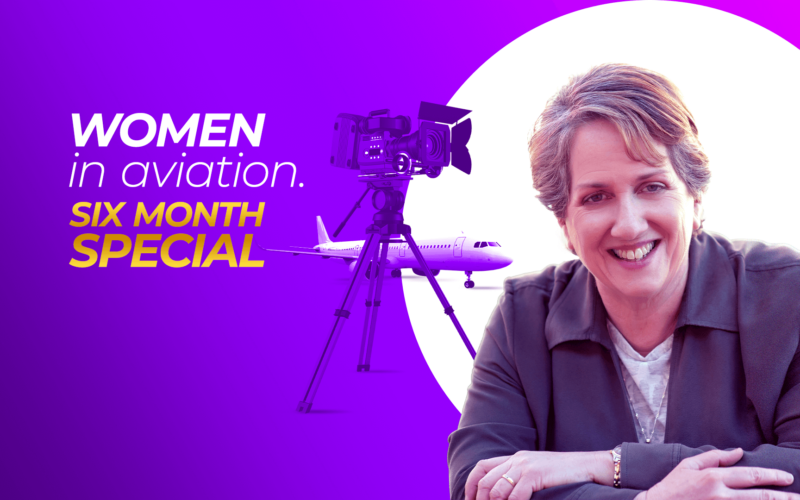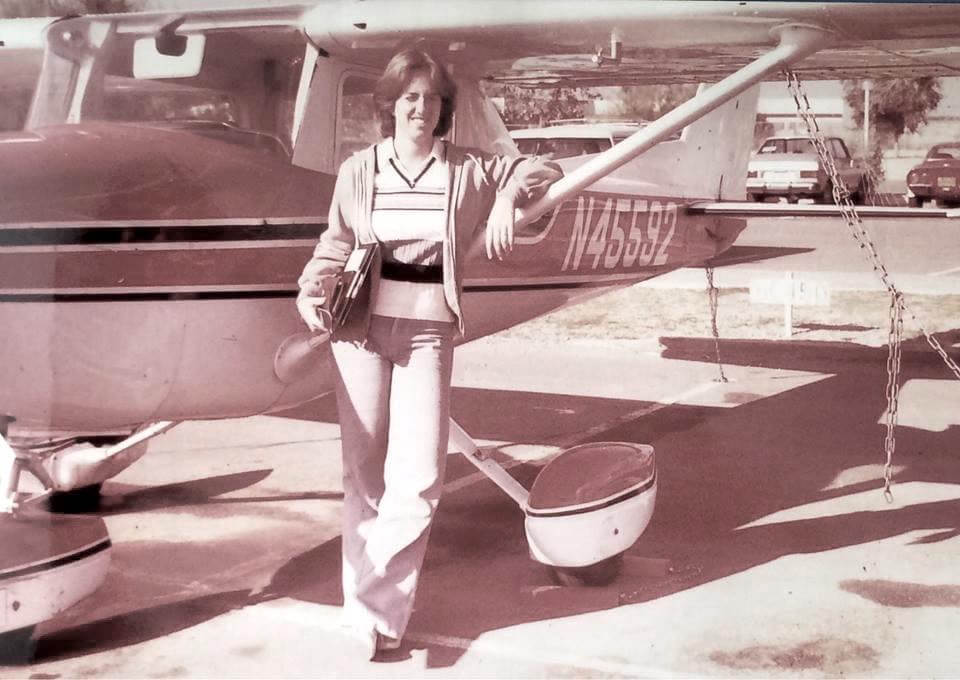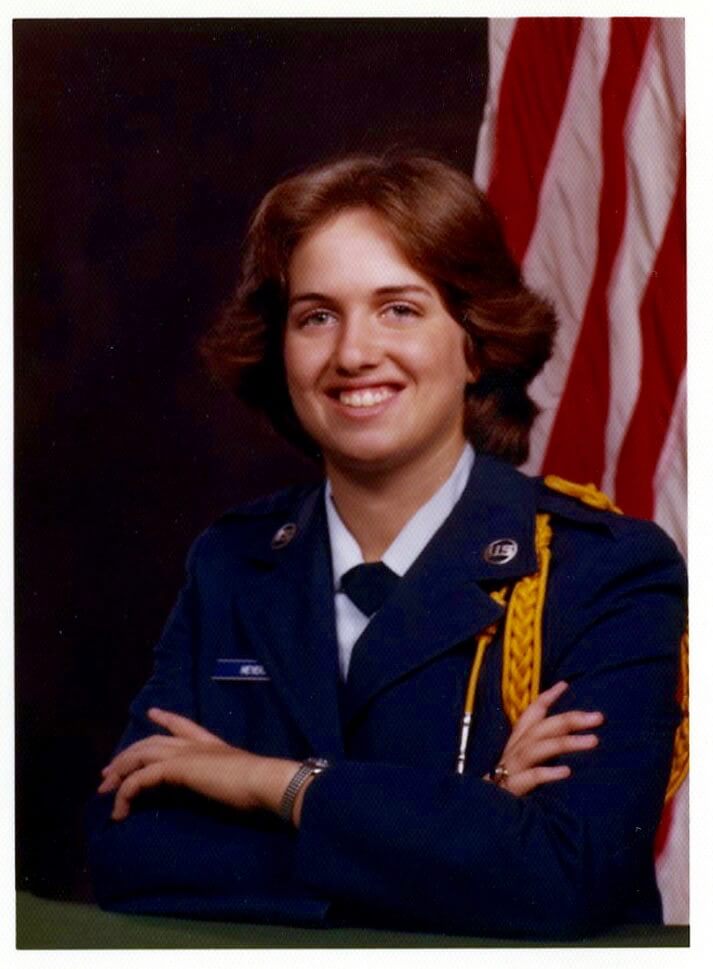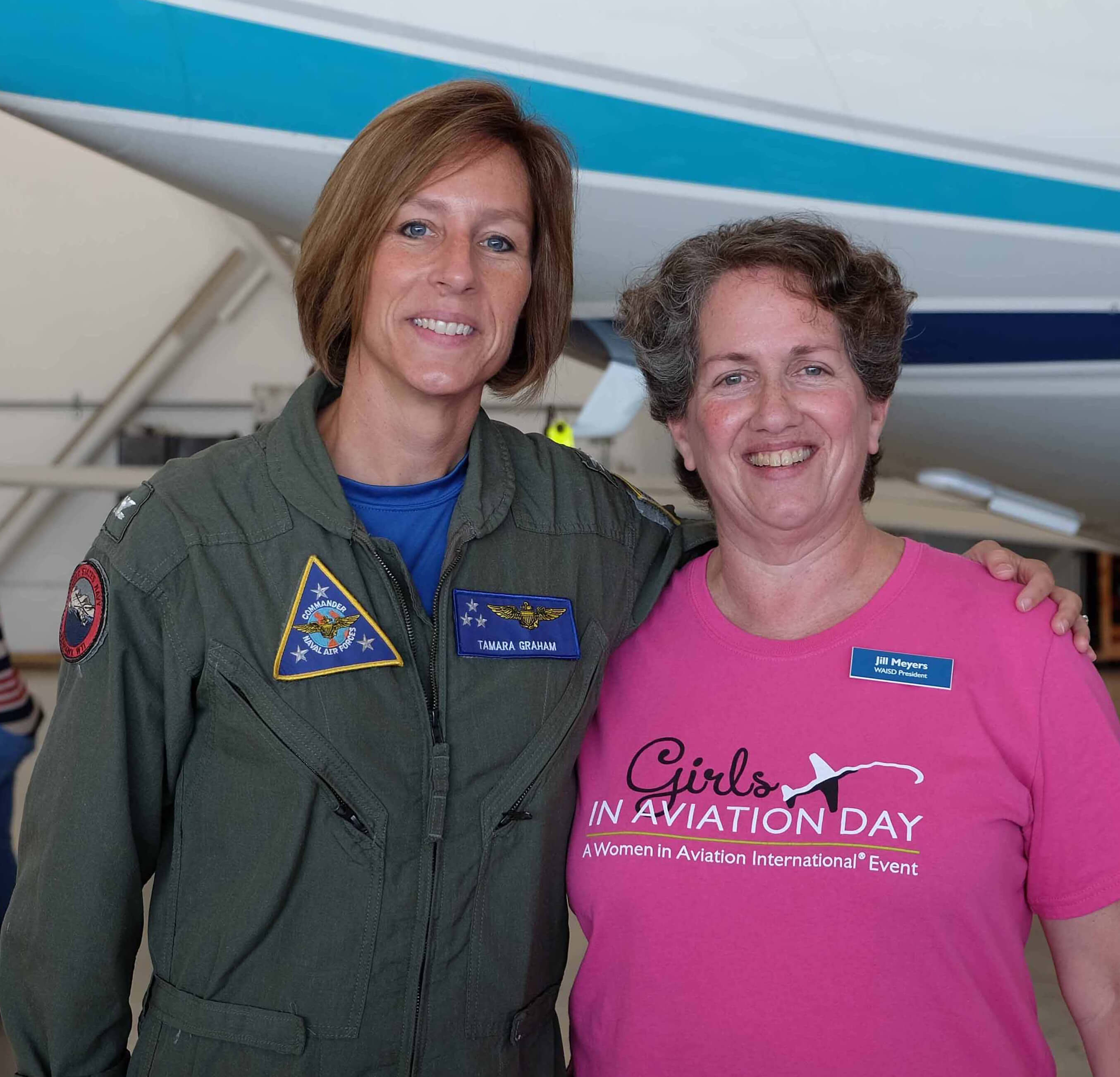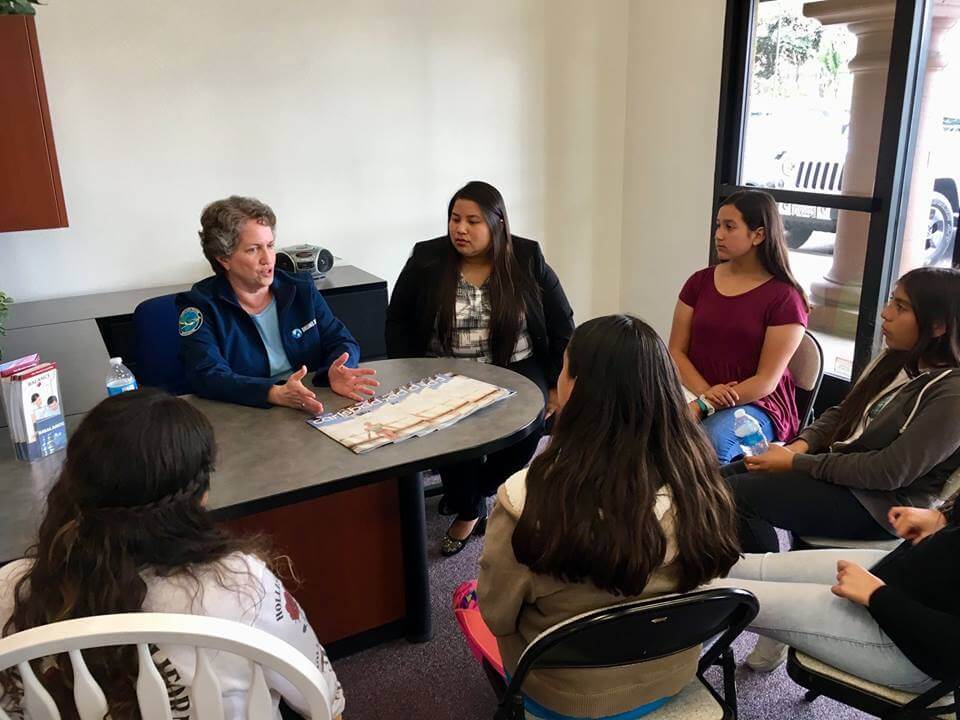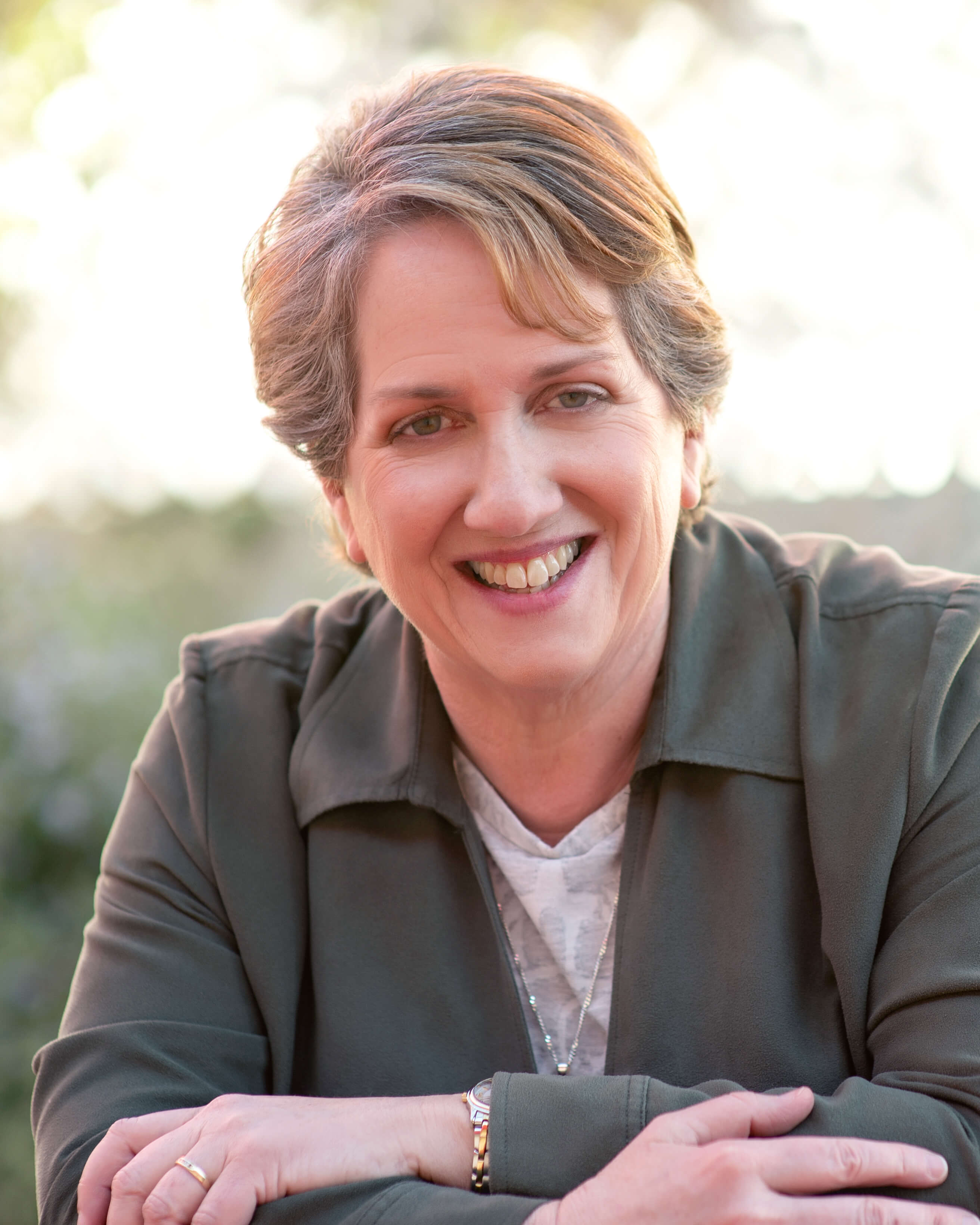Jill Meyers’ passion for aviation and aerospace transcends borders and generations.
Recognized internationally for her contributions to the industry, Jill has received accolades, including the San Diego Chamber of Commerce 2016 Women in Leadership Award and the 2018 American Institute of Aeronautics and Astronautics (AIAA) Outstanding Enhancement of the Image of the Aerospace Profession Award. In 2020, she was selected as one of the New Mexico Technology Council’s Women in Technology honorees, and in 2021 was elected to the University of Texas at Austin‘s Academy of Distinguished Alumni. And perhaps her greatest honor was being elected in 2019 as a Fellow of the Royal Aeronautical Society in London, the world’s only professional body dedicated to the aerospace community.
Most recently, Jill was ranked third on an international list depicting the ‘Top 62 Women in Aviation and Aerospace to Follow on LinkedIn‘. These accolades have been given in recognition of an astonishing career, which has focused on giving back to the aviation industry.
Jill is an aerospace engineer, business leader, licensed pilot and Air Force veteran. But Jill’s impressive resume does not stop there. She has been involved in exciting international outreach projects in the USA, Africa and Australasia and, for the last 20 years, Jill has channeled her passion into championing, supporting, mentoring and advocating for girls and young women in STEM programs.
So, what motivates Jill to give back?
“When I got my pilot’s license at 17, I never saw another woman at all on the field,” explains Jill. “There were no other female students, no female instructors, no women in the control tower. There were no women anywhere. And my flight instructor, who was an amazing guy, never said to me, ‘oh, by the way, would you like to be a professional pilot? And here’s how.’ I had no thought in my head that I could be a pilot.
“One of the reasons I do so much mentoring and outreach (work) is so that people don’t struggle as I did.”
Jill cites American astronaut Sally Ride who, in 1983, became the first American woman to travel to space.
She continues: “Sally Ride once said: ‘you can’t be what you can’t see’ and it’s such a great concept because the issue arises when young girls don’t see women astronauts, female fighter pilots, or female firefighters – it doesn’t have to be aviation – or young boys not seeing male nurses, which tend to be predominantly women, at least it used to be.
“If you don’t see people that look like you in these fields, no matter which area you might come from in the world, you just don’t have that inspiration. And with that thought, one of the things I love to do with outreach is connecting other people.”
Passionate about becoming a pilot and being around aeroplanes, Jill enlisted into the US Air Force after acquiring her pilot’s license in the 1970s. She began her Air Force career by working on ground radar and communication systems, which placed her near flight operations. But, after watching the 1981 space shuttle launch, Jill became enamored with the space program. Almost immediately, she applied for a unique Air Force program that offered her the opportunity to pursue an Aerospace (Astronautical) Engineering degree.
She says: “I flew privately for a while after that. I love flying, I still miss it, and I’ve flown a few times in the past 40 years. But the aerospace engineering career, in particular, is so ridiculously exciting, with all of the different things you can work on, and all the amazing technologies being developed.
“I think back and wonder what it would have been like had I proceeded on the path of becoming a professional pilot. And I actually think I’m on a better path for me, and that I’m having a heck of a lot more fun.”
During a career that spans more than 25 years, Jill worked in senior management roles for several aviation and aerospace companies including Boeing, Raytheon, and Northrop Grumman, on programs including the US/UK/NATO Airborne Warning and Control System (AWACS), Global Hawk, and the F-35 Joint Strike Fighter jet. Jill was also an independent aviation management consultant for four years, providing her expertise to organizations around the world
Jill realised early in her career that she was often the only woman in a room alongside 40 or 50 male colleagues. While this has raised several challenges throughout her career, Jill has managed to navigate such issues with perception and tenacity.
She says: “We still have issues in our industry. The way I’ve dealt with them is to fight it as best I can without ruining my own career. But it is also important to know when it’s time to leave.”
Jill recalls her time spent working for a particular company where she witnessed multiple ethical violations and breaches of policy. After spending a number of years with the Organization, she received no coherent support when she raised these issues. So, Jill decided to leave.
She says: “The message I have to women is you just have to really do what’s best for you. But you have to have the strength to walk away if you need to, which a lot of people don’t do.”
Despite facing obstacles in her career, Jill has managed to find a way to channel her own experience and knowledge into helping others in the industry. Jill has held roles in exciting international projects alongside working with several organizations dedicated to supporting and furthering women in aviation.
Jill has been a member of Women in Aviation International for many years, and was President of three different chapters around the United States. She was also a Member of the Board of Advisors for the International Women’s Air & Space Museum and for The BettyFlies Foundation, a non-profit organization that funds aviation and aerospace initiatives to inspire youth in Colorado.
She also shares her experience in three international projects.
Firstly, Every Student Flies, a program run in Aspen Colorado, which empowers youth and adults to learn about the joys and responsibilities of flying by providing students with classroom and flight training needed to pilot aircraft.
Jill says: “There is a flight school in Aspen, Colorado that decided to run a program, which we believe is the first one in the United States, that is set up in this fashion, which is, there’s a flight school and there’s a public high school.”
She continues: “The head of the board of directors of the flight school at the time, who is a full-time pilot for American Airlines (A1G) (AAL), wanted to do something to introduce aviation to the kids in the school. I was hired as a consultant to handle PR and media for the launch of a program called Every Student Flies.
“They were able to secure two small training aircraft from the company Diamond, the model was the DA40 Diamond Star. They put together a program, they hired a flight director, a woman, to be the head of the program. And they offered a two-hour flight lesson for absolutely no cost to every single student at the high school, which at the time was, I believe, 520 kids.”
The second project is called Project Blue Angel.
Jill explains: “Blue Angel is a really fascinating project. I’ve been connected with a dear friend of mine, Chris Williamson, who runs a project called Chasing Earhart. This project is to collaborate with all of the different teams of people around the world who are looking for Amelia Earhart, Fred Noonan and their aircraft. As people may not know, Amelia Earhart and Fred Noonan disappeared on July 2, 1937, when [Amelia] was toward the end of her attempt to fly around the world in a Lockheed Electra aircraft.
“Chris has been collaborating in different ways, trying to get the teams to work together. He put together a phenomenal panel in July 2018 to pull together a group of experts and someone from every team looking for Amelia. Shortly after that panel, which I helped him pull some folks into, a gentleman named Bill Snavely called me, who was one of the panelists. Bill told me he came across rumours of an aircraft wreckage at the bottom of the ocean off the coast of Buka Island near Papau New Guinea. Amelia Earhart’s last flight leg, where she disappeared, departed from New Guinea and was headed to a tiny island called Howland Island, which she never reached. The team has completed two dives down there and I joined Bill‘s team to help them with media and PR. Hopefully someday we‘ll be able to make an announcement, but we don‘t know if we‘ll ever know for sure.”
And lastly, the third project is called „Fly For STEAME“, run by Dare to Dream, an organisation whose aim is to get more women into all aspects of the industry, founded in Gaborone, Botswana by Captain Kgomotso Phatsima.
Jill says: “There’s an amazing, amazing woman in Botswana named Kgomotso Phatsima. Phatsima, who was one of the first women to fly in the Botswana Defence Force, grew up in a very small village right outside of Gaborone and she was a pilot for about 10 years. Then, she left the military to start a nonprofit called Dare to Dream.
“Dare to Dream runs workshops for young kids, and it’s everything from robotics to aviation to computer programming. But they also teach business skills, and I love that piece of it.”
So, what does the project entail?
Jill explains: “We all talk about the acronym STEM, Science, Technology, Engineering and Math. A lot of people add the A for Arts. Well, Phatsima adds an E At the end for Entrepreneurship, which, again, I just love that piece of it, because she is a businesswoman who has done amazing things with her life and to help the people in her community.
“Phatsima reached out to me last year and asked if I would get on a Zoom call with her [as] she wanted me to help her with something.”
The something in question was to help expand the program outside Botswana.
Jill adds: “The idea is [that] we have a new program called Fly for STEAME Southern Africa, and Fly for STEAME is going to involve our team getting hold of an aircraft and the idea is we would fly out of Botswana, we would fly to five of the surrounding countries, to Angola, Namibia, South Africa, Zambia and Zimbabwe, one at a time, and spend a few days in each country [where] we [would] run a one day workshop for 100 young girls. It is for girls only in those countries to do these educational pieces and to have guest speakers and, really, have it be educational and inspiring while also focused on aviation.”
So, does Jill have any advice for young people looking to enter the industry?
“There are so many incredible new and exciting things going on,” she says. “There are enormous efforts and there are many companies working on supersonic travel, working on hypersonic travel, working on electrically powered aircraft, and those are all moving forward and not at all impacted by what’s going on with COVID-19. And of course, on the space side, we’ve all seen the recent launches from Blue Origin and Virgin Galactic and the unbelievable, incredibly amazing successes of SpaceX.”
She adds: “My two pieces of advice are to find a mentor and to research [these] membership and non-profit organizations. There are so many organizations out there that can not only help you find a mentor but have the ability for you to network and meet people, especially for women in all different kinds of jobs.”
“If you get into one of these organizations, not only can you meet amazing people who can help you, but you can learn a lot through what they provide online, through conferences and through their magazine. It’s just a huge educational burst at a very low cost.
“Women in Aviation is $45 a year for a regular member and $32 a year for student members. So, that’s a nice little investment toward learning what all the opportunities are for people interested in these fields.”

